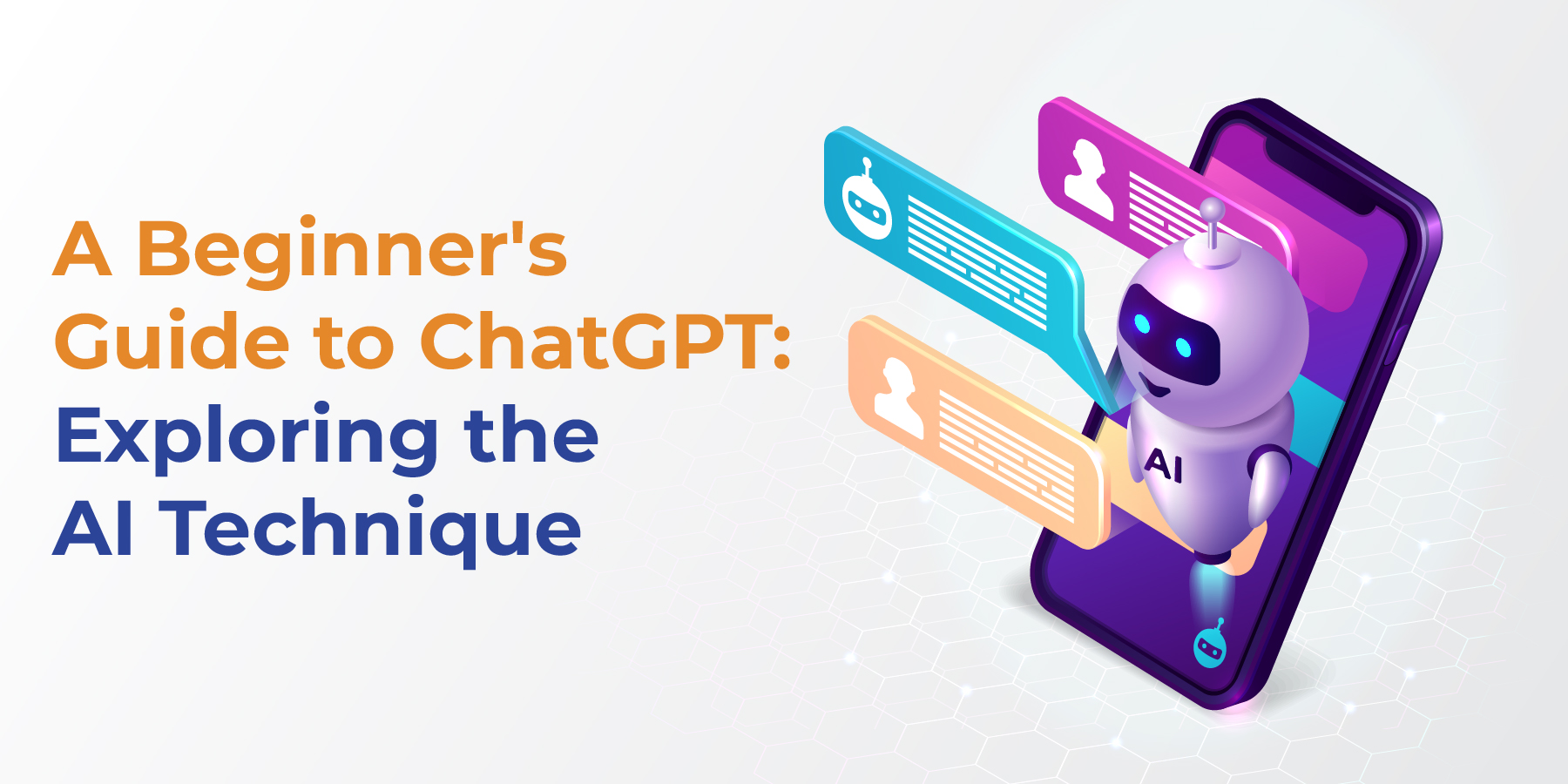
Are you curious about the power of natural language processing and artificial intelligence technology-powered language generation? Look no further than ChatGPT, the state-of-the-art AI technology language model developed by OpenAI. In this beginner’s guide, we’ll dive into the inner workings of ChatGPT, including its training process and the various applications it’s being used for, such as an AI assistant and a chat box.
From automated customer service to creative writing, ChatGPT is revolutionizing the way we interact with language, making it a powerful tool for AI research. So, whether you’re a developer, marketer, or tech enthusiast, this guide is for you. Let’s explore the exciting world of ChatGPT and its potential as an AI personal assistant together!
What is ChatGPT?
ChatGPT, also known as Generative Pre-trained Transformer, is a state-of-the-art artificial intelligence technology natural language processing (NLP) model developed by OpenAI. It is a deep learning model trained on a massive amount of text data, allowing it to generate human-like text.
ChatGPT is a powerful AI research tool with many applications, such as an AI assistant and a chat box.
ChatGPT is based on the transformer architecture introduced in the 2017 paper “Attention Is All You Need.” The transformer architecture allows the model to efficiently process and understand long-term dependencies in text, a previously challenging task for NLP models. This makes ChatGPT particularly well-suited for language translation, text summarization, and creative writing tasks.
One of the critical features of ChatGPT is its ability to generate text almost indistinguishable from text written by humans. This is achieved by training the model on diverse text data, including books, articles, and websites. By learning the patterns and nuances of human language, ChatGPT can generate coherent, grammatically correct, and often humorous text.
How ChatGPT Works?
ChatGPT uses unsupervised learning. The model is trained on a large text dataset without specific labels or output. The model learns to generate text by finding patterns and structures within the data.
The unsupervised learning approach allows the model to discover a wide range of language patterns and develop text similar to human-written text, making it a powerful tool for natural language processing. With its human-like text generation capabilities, ChatGPT has the potential to revolutionize the way we interact with language-based technologies, such as AI research, AI assistant, chat box, and AI personal assistant.
ChatGPT works as follows:
- Transformer-based architecture: ChatGPT uses transformer architecture, a deep neural network that processes input data in parallel, allowing for faster training and inference.
- Pre-training: The model is pre-trained on a large corpus of text data to learn patterns in language and generate text that is similar to human language.
- Contextual Prediction: At inference time, the model generates a response to a given input text by predicting the following word in the sentence based on the previous words and their context.
- Attention Mechanisms: The model uses attention mechanisms to focus on the relevant parts of the input when generating its response. This allows the model to understand the context and generate more relevant responses.
- Fine-tuning: The model can be fine-tuned on specific tasks such as answering questions, generating responses to customer queries, or generating creative writing.
- Large-scale Training: ChatGPT is trained on massive data, allowing it to generate high-quality responses and perform well on various language-related tasks.
- Real-time Inference: ChatGPT can be used in real-time applications such as chatbots, where it can respond to user queries in near real-time.
Applications of ChatGPT
Automated Customer Service
ChatGPT can be integrated into a chatbot to provide automated customer service by handling customer inquiries and providing answers in real time. Here are the steps to link ChatGPT to a customer service chatbot:
- Determine the scope of the chatbot: Identify the types of customer inquiries that the chatbot will handle, such as product information, technical support, billing, and others.
- Train the AI model: Use a pre-trained language model like OpenAI’s GPT-3 or train your own custom AI model on a large dataset of customer queries and answers.
- Integrate the AI model into a chatbot platform: Choose a platform such as Dialogflow or Botpress that supports AI integration and connect the trained AI model to the platform.
- Design the conversation flow: Determine the chatbot’s steps to respond to customer inquiries and create a conversational flow for each inquiry type.
- Test and refine the chatbot: Test the chatbot with a small group of customers to identify areas for improvement and refine the conversational flow and AI model as needed.
- Deploy the chatbot: Once it is tested and refined, deploy it on the desired channels, such as a website, mobile app, or messaging platform.
- Monitor and improve the chatbot: Regularly monitor the chatbot’s performance and gather feedback from customers to continue improving the chatbot’s accuracy and usefulness.
Language Translation
ChatGPT can translate text from one language to another. This can be useful for businesses that operate in multiple countries or for individuals who need to communicate with people who speak different languages.
Creative Writing
ChatGPT can generate creative writing, such as poetry or short stories. This can be useful for writers looking for inspiration or for ecommerce businesses that need to create content for marketing or advertising purposes.
In addition to poetry and short stories, ChatGPT can generate various types of creative writing, such as:
- Emails: ChatGPT can be used to write personal or professional emails that are clear, concise, and effective in conveying the desired message.
- Social media content: ChatGPT can generate engaging and shareable social media posts, such as captions, status updates, and tweets.
- Blogs: ChatGPT can be used to write blog posts on various topics, including news, technology, health, and lifestyle. The model can provide informative and well-written blog content, making it easier for bloggers to create high-quality blog posts in a shorter amount of time.
- Product descriptions: ChatGPT can be used to write product descriptions that are clear, concise, and persuasive, highlighting the features and benefits of the product.
- Ad copy: ChatGPT can generate copy for advertisements, including headlines, body copy, and calls to action.
- Landing pages: ChatGPT can write copy for landing pages, providing information about the product or service, highlighting its features and benefits, and guiding the user to take a desired action.
ChatGPT can help writers, marketers, and businesses create high-quality content efficiently, making it a valuable tool for creative writing.
Text Summarization
ChatGPT can summarize long pieces of text into shorter, more easily digestible versions. This can be useful for people who want to quickly understand the main points of a document or for businesses that need to summarize reports or other documents.
Other Use Cases
ChatGPT can be used in many other applications, such as natural language understanding, question answering, and text generation. It can be used to improve search engines, and also can be used in the field of healthcare, finance, legal and many more.
Limitations and Future developments
Limitations of the Current Model
Despite its capabilities, the current ChatGPT model still has some limitations. One limitation is that it can struggle with understanding context, particularly in conversations or texts where the context is not clearly defined. Additionally, it can generate responses that may be nonsensical or offensive. The model also may struggle with understanding idiomatic or colloquial language.
Possible Improvements and Future Developments
To address these limitations, future developments in ChatGPT could focus on improving the model’s ability to understand the context and idiomatic language. Additionally, more advanced techniques, such as transfer learning and fine-tuning, could be used to improve the model’s performance. Another area of focus could be on developing techniques to minimize the risk of the model producing nonsensical or offensive responses.
Ethical Considerations
As with any technology that uses natural language processing and generation, there are ethical considerations when using ChatGPT. One concern is the potential for the model to perpetuate biases present in the training data. This can lead to the model producing responses that are discriminatory or offensive. Therefore, it’s crucial to have a diverse and well-curated dataset to train the model and to be mindful of the potential biases that can be introduced during the training process. Furthermore, using ChatGPT in sensitive domains, such as healthcare or finance, should also be done with great care and attention to data privacy and security.
Wrapping Up
ChatGPT is a powerful AI technique that can revolutionize how we interact with technology. As a beginner’s guide, we have provided an overview of ChatGPT and how it works. We have also highlighted some potential applications of ChatGPT, such as natural language processing, language translation, and chatbot development. By understanding the capabilities of ChatGPT, businesses can explore new ways to improve customer service, automate tasks, and gain insights from large amounts of data.
As the field of AI continues to evolve, businesses need to stay informed about the latest developments and explore how they can be leveraged to enhance their operations. We hope that this beginner’s guide to ChatGPT has provided valuable insights and sparked interest in exploring this exciting technology further.
With Vserve Ebusiness Solution you can explore more about ChatGPT and how it can enhance your business, visit our website and stay updated with the latest advancements in AI.








